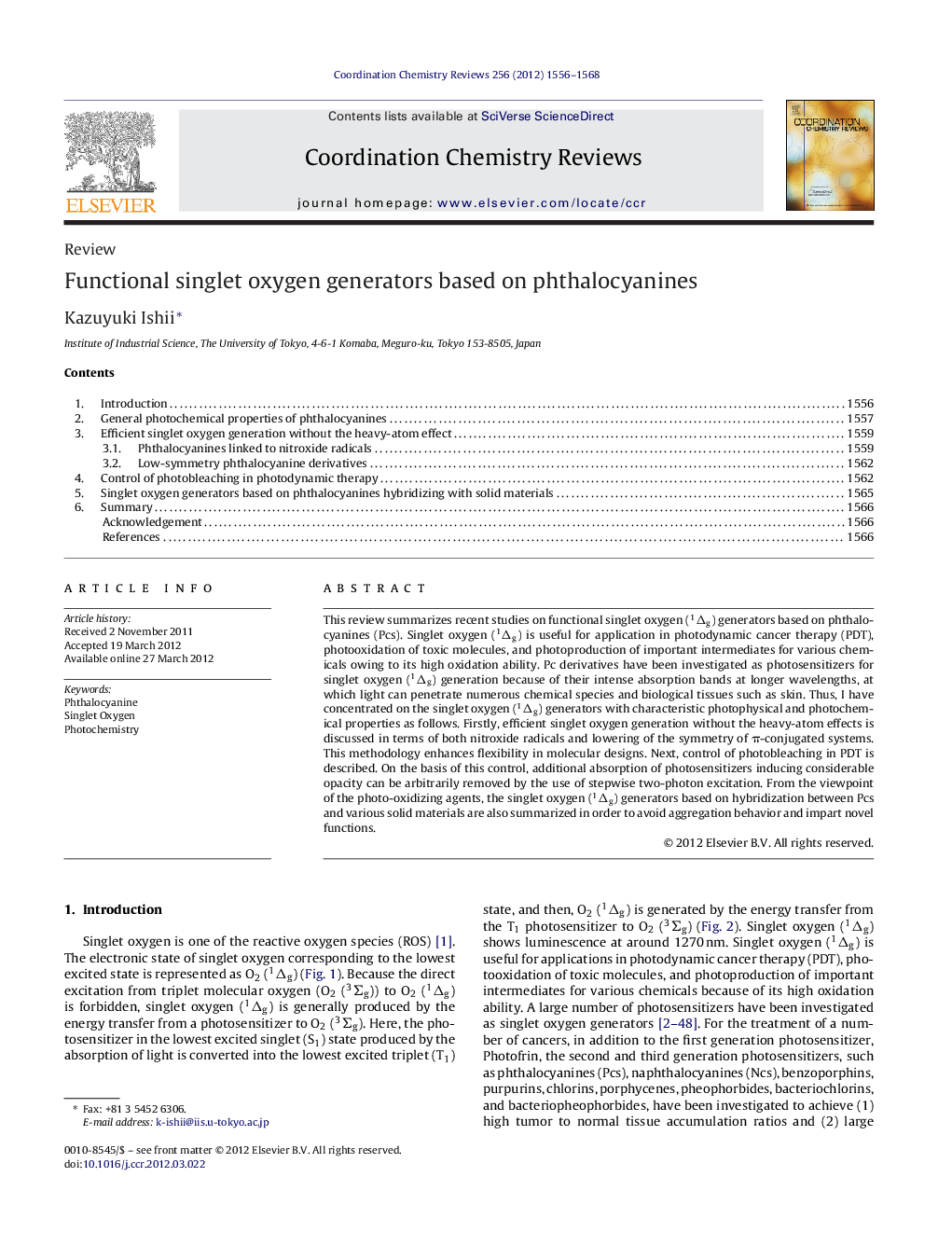| Article ID | Journal | Published Year | Pages | File Type |
|---|---|---|---|---|
| 1301076 | Coordination Chemistry Reviews | 2012 | 13 Pages |
This review summarizes recent studies on functional singlet oxygen (1Δg) generators based on phthalocyanines (Pcs). Singlet oxygen (1Δg) is useful for application in photodynamic cancer therapy (PDT), photooxidation of toxic molecules, and photoproduction of important intermediates for various chemicals owing to its high oxidation ability. Pc derivatives have been investigated as photosensitizers for singlet oxygen (1Δg) generation because of their intense absorption bands at longer wavelengths, at which light can penetrate numerous chemical species and biological tissues such as skin. Thus, I have concentrated on the singlet oxygen (1Δg) generators with characteristic photophysical and photochemical properties as follows. Firstly, efficient singlet oxygen generation without the heavy-atom effects is discussed in terms of both nitroxide radicals and lowering of the symmetry of π-conjugated systems. This methodology enhances flexibility in molecular designs. Next, control of photobleaching in PDT is described. On the basis of this control, additional absorption of photosensitizers inducing considerable opacity can be arbitrarily removed by the use of stepwise two-photon excitation. From the viewpoint of the photo-oxidizing agents, the singlet oxygen (1Δg) generators based on hybridization between Pcs and various solid materials are also summarized in order to avoid aggregation behavior and impart novel functions.
Graphical abstractFigure optionsDownload full-size imageDownload high-quality image (202 K)Download as PowerPoint slideHighlights► Singlet oxygen yields of phthalocyanines can be increased by the interactions with nitroxide radicals. ► Singlet oxygen yields of phthalocyanines can be controlled by the symmetry of the π-conjugated system. ► Photobleaching and Phototoxic effects are controlled by the combined use of a nanosecond-pulsed laser and a continuous wave-laser. ► Phthalocyanines hybridizing with various solid materials are summarized.
